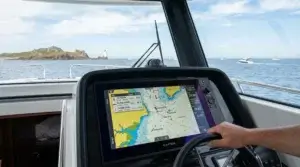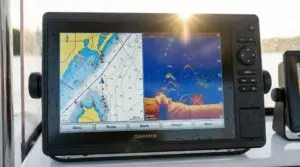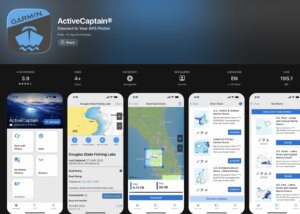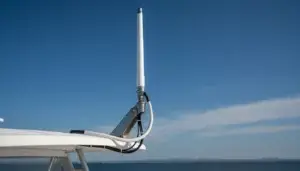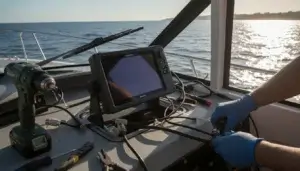GPS technology has become a staple of daily life, helping me find directions on road trips, tracking fitness routines, or finding a misplaced smartphone. While GPS is well known for its convenience and accuracy, I know from experience that problems can pop up when you need it most. Here, I will break down the most common GPS issues and provide all-in-one context and tips for solving them.
The Basics: How GPS Works and Why Problems Happen
GPS, or Global Positioning System, uses satellites that orbit Earth to send signals to receivers in devices like smartphones and car navigation units. The receiver calculates its position by comparing signals from multiple satellites. Even though the system is designed for global coverage, day-to-day use isn’t always perfect. Factors like buildings, weather, hardware, and outdated software can cause a range of problems.
Knowing these basics makes it easier to get a sense of why I sometimes lose signal or get wrong directions, especially in complex environments like busy cities or remote areas. Although satellite technology is impressive, it’s not immune to everyday hiccups, so being aware is helpful.
Typical GPS Problems and Their Causes
It’s common to run into challenges with GPS accuracy or reliability. Here are several frequent problems and why they happen:
- Loss of Signal: Tall buildings (urban canyons), tunnels, thick tree cover, or even heavy clouds can block GPS signals.
- Wrong Position Reading: Electronics inside your car or nearby power lines can interfere with signal reception. The device may show you on the wrong street or lag behind your current position.
- Slow Updates or Lag: Older devices, limited processor speed, or sluggish data connections may make it seem like your GPS is lagging, especially when driving fast or changing direction frequently.
- Outdated Maps: Mapping software needs regular updates. If my phone or GPS unit hasn’t downloaded the latest maps, I can end up following incorrect routes or not finding new roads.
- App Crashes or Freezing: Bugs, low memory, or background updates can cause navigation apps to crash. This can leave me without guidance when I need it.
Spotting these patterns helps me figure out if a quick fix, like moving to an open area or updating software, will get things working again.
Key Terms and Common Troubles Explained
If you’re new to GPS, some technical terms might sound confusing. Here are a few important ones and quick explanations:
- Signal Acquisition: The process of your device finding and locking onto enough satellites to provide a position. This can be slow in cities or forests.
- GPS Drift: Even when stationary, your device might show gradual changes in position. This often happens due to weaker signals.
- Assisted GPS (A-GPS): Uses mobile networks and WiFi to help speed up the initial position fix. If you’re somewhere with no cell service or WiFi, your device might take longer to start up.
- Multipath Error: GPS signals can bounce off buildings or rocks before reaching your device. This can cause accuracy problems.
- Receiver Sensitivity: Different devices have different abilities to pick up weak signals, so some smartphones may work better than others under tough conditions.
Understanding these terms helps me troubleshoot if I’m running late or my map seems off.
Quick Troubleshooting Steps for Common GPS Problems
When GPS problems pop up, I use a simple checklist to quickly narrow down the possible causes:
- Move outside or into an open area: Step outside or away from tall buildings or thick tree cover to improve signal reception.
- Restart your device: A quick reboot can reset your phone or GPS receiver and help it reacquire a signal faster.
- Toggle location services: Turning location services off and on in your settings can refresh the GPS function.
- Check for software updates: Make sure apps and map data are current, as updates often fix bugs or add missing roads.
- Clear app cache or data: Navigation apps, like Google Maps or Waze, benefit from clearing cache if they’re running slow or showing outdated information.
Trying these steps often solves everyday GPS issues for me without needing technical help.
Things to Keep in Mind When Using GPS Devices
While navigation has gotten much easier, there are a few things I always remember to get the best results from GPS:
- Battery life: GPS can drain a battery quickly. I travel with a car charger or external battery, especially on long trips.
- Data usage: Some apps need an internet connection for live traffic and maps. Downloading maps ahead of time is really important for travel in remote areas.
- Privacy and data sharing: Some GPS apps collect your location history. It’s good to double-check privacy settings and decide what I’m comfortable sharing.
- App permissions: Double-check which apps have access to location services. Having too many apps active can slow down your device or cause signal conflicts.
Staying aware of these practical points gives my experience with GPS a boost, leading to fewer hassles.
Batteries and Power Sources
Watching my battery level is something I learned the hard way. Once, GPS navigation drained my phone battery so quickly that I lost directions before I reached my destination. Now, I always plug into my car charger or carry a power bank on outdoor trips.
Location Accuracy and Environmental Factors
Dense neighborhoods or hiking under thick forest canopies often make my GPS readings jump or lag. I’ve found that pausing in an open space lets the device get a clearer signal, which gives more accurate results.
Software Updates and Map Data
Missing a turn because my maps hadn’t updated was frustrating during a road trip through a fast-growing area. Now, I always update maps before heading anywhere new or unfamiliar, especially in places known for expansion or construction.
Practical Tips for Reliable GPS Use
Using GPS technology confidently means keeping a few practical habits in mind. To avoid headaches:
- Update your main navigation app before leaving home, especially for big trips.
- Bring a charger or backup power for longer trips.
- Practice using the offline features of your app in advance, so you’re not caught off guard by a loss of signal in rural or underground locations.
- Double-check app permissions and close navigation apps you don’t need.
Following these habits, I experience fewer problems and enjoy smoother trips.
Real-Life Examples of GPS Problems
I’ve run into several situations where GPS challenges proved to be inconvenient. While driving in a city surrounded by skyscrapers, my navigation app once showed me turning onto roads I hadn’t reached yet. This kind of GPS drift likely happened due to multipath error, where signals bounced off buildings. On a mountain hike, the dense forest overhead delayed my position by several minutes until I made it to a clearing, letting my device catch up.
In both of these situations, knowing the frequent causes for these problems kept me from getting stressed. Rather than relying on GPS alone, having a paper map or a preloaded offline map saved the day.
Frequently Asked Questions
I often get questions from friends or family about GPS reliability. Here are a few I answer most often:
Question: Why does my GPS keep losing signal in the city?
Answer: Tall buildings can block or reflect satellite signals. This makes your position less accurate or causes signal loss. Moving into an open area or waiting a moment usually helps.
Question: Can the weather affect my GPS accuracy?
Answer: Bad weather, especially heavy clouds or storms, can make tracking weaker, but it’s usually only a major issue in very remote or exposed areas.
Question: What should I do if my GPS directions are wrong?
Answer: Check that your map is updated and try restarting your app or device. For tough locations, confirming directions with a local or using an offline map as a backup can help.
Final Thoughts on Getting the Best from GPS
GPS issues are normal and part of using technology that depends on satellite signals. Understanding the usual problems helps me keep calm, make easy fixes, and trust my navigation, especially during travel or emergencies. Staying updated, checking my hardware, and being prepared gives me the confidence to use GPS with fewer worries every day. The popular use of GPS shows how much we rely on it, but staying sharp and keeping backups makes each trip smoother.
